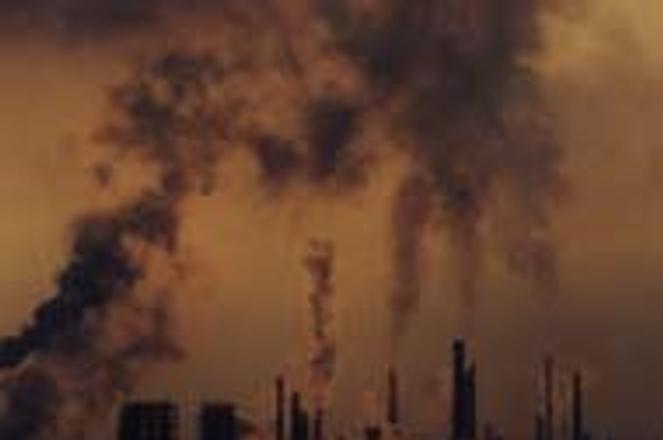CLEARER skies, fatter pockets: Slovakia's emissions trade is a first.photo: File photo
THE SLOVAK government has approved a trade of greenhouse gas emissions in what is being called the first such deal under the Kyoto Protocol on climate change and an indicator of what could become a huge market when EU-wide emissions trading begins in 2005.
The trade, which took place in mid-December, saw credits for the equivalent of 200,000 tonnes of CO2 emissions go to the Sumitomo Corporation of Japan from the Slovak heating producer Menert. While the official price for the package was not released, experts estimate the deal is worth around 5 euro per ton, or 1 million euro altogether.
"If you were looking through a window to the true future of the greenhouse gas emissions markets, this trade is it," said Andrew Ertel, head of Evolution Markets, the New York-based energy and environmental broker that arranged the deal.
Although the Kyoto Protocol suffered a blow with its rejection by the US - the world's largest emitter of greenhouse gasses - its recent ratification by New Zealand and Canada and its expected ratification by Russia early this year will give the treaty the required backing for it to come into effect.
All EU member and accession states have already ratified the treaty, agreeing to cut emissions of six gasses thought to be a cause of global climate change to 8 per cent below 1990 levels across the union by 2012. However, different states will have different reductions targets based on local economies.
To limit costs and spread the reductions across Europe, the EU Council of Environment Ministers in early December approved a proposed directive for a 'cap and trade' scheme, which would require member states to limit greenhouse gas emissions according to the Kyoto guidelines, but allow for the free trade of surplus emissions in the form of credits.
The directive will cover more than 5,000 industrial installations across Europe, accounting for over 40 per cent of the EU's CO2 emissions.
The idea of an environmental exchange is not new - a sulphur exchange was successfully piloted 10 years ago in the US to combat acid rain and both Denmark and Britain have greenhouse gas exchanges. But the EU plan will set up the first international bourse for emissions credits in 2005.
While participation in emissions capping and trading is optional for now, by 2008, parties to the protocol will be obliged to maintain emission reduction targets.
According to the plan, individual countries are given Assigned Amount Unit (AAU) allowances for emissions equal to each country's Kyoto target. Individual governments can then distribute AAUs through local companies, sell them to other companies or countries, or bank them for future use.
"AAUs represent the gold standard in tradable greenhouse gas emissions commodities. Since AAUs are allocated directly to governments, it makes them the ultimate low-risk global commodity for greenhouse gas reductions," said Ertel.
While the Menert-Sumitomo deal may be the first of its kind, at least one emissions-trading consultancy sees a future boom as EU accession states in central and eastern Europe sit on large surpluses of allowable gas levels (see chart below) while heavily industrialised EU states seek cost-effective ways to meet reduction requirements.
"Greenhouse gas emissions in the eight accession countries in central and eastern Europe have decreased sharply over the past decade. As a result, these countries currently have a surplus of about 335 million tonnes of CO2 equivalent emissions," said Atle Christiansen, head analyst at Point Carbon, a Norwegian emissions trading consultancy.
"We expect to see a gradually increasing market from about 1 billion euro in 2005 up to a possible 8 billion euro in 2007," he said.
According to Menert's Daniel Domanovský, the Sumitomo sale has been over a year in the making and should be seen as a great step forward.
"This is the first deal that has been closed in the framework of international emissions trading, which is one of the three flexibility mechanisms of the Kyoto Protocol," said Domanovský.
Other flexibility mechanisms include the Clean Development Mechanism and the Joint Initiative programmes, under which countries can earn emissions credits by developing and financing green energy projects in different countries.
Slovakia is already involved in one joint initiative with the Dutch government that will bring the latter credits for 550,000 tons of CO2 emissions in return for reducing methane discharge from Slovak municipal landfills.
Methane (CH4) is produced naturally from the decomposition of organic matter, but it is considered to have much more potential to damage the global climate than CO2.
According to Slovak Environment Minister László Miklós, emissions reductions activities by Menert made the Sumitomo trade possible, and proceeds from the sale will be used to fund further environmentally friendly energy projects.
"By tapping the international carbon market, this innovative transaction allows us to pursue green investments and to create additional jobs.
"The Slovak Republic is home to many low-cost greenhouse gas reduction opportunities, such as increasing energy efficiency and switching to cleaner fuels," said Miklós.
"The earlier we can start reducing emissions domestically, the bigger the environmental benefit," he said.


